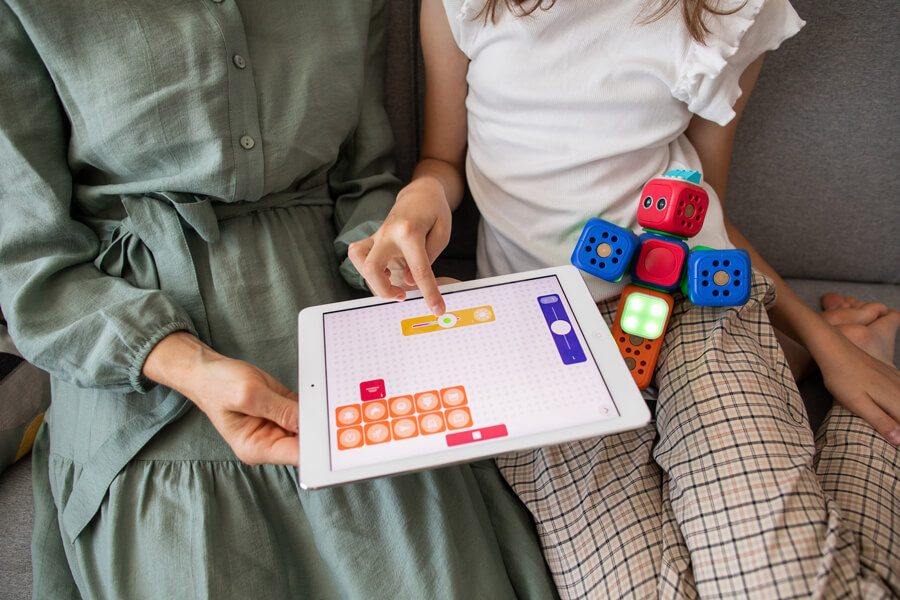
How much time do kids spend glued to their tablets or smartphones’s screens? Ever since the pandemic, screen time has doubled across the world. Research shows that excessive use of digital devices can significantly impair little ones’ developing brains and prevent them from succeeding at school. However, when put to good use, technology can become a powerful tool for learning. Indeed, online educational games can motivate children to assimilate new knowledge and lead to positive school outcomes.
An excellent addition to traditional education
There has been considerable interest in this specific topic. For instance, a research team from the University of California has conducted a series of fascinating experiments assessing attention, perception, mental flexibility, reasoning, and other cognitive skills. They concluded that, while most commercially available games do not significantly enhance cognition, first-person shooter games are particularly useful for this purpose. This is because these action-packed games stimulate perceptual attention with immediate feedback and offer various (and increasing) levels of challenge.
Now, the University of Santa Barbara team has created one non-violent action game of this genre to specifically train multitasking, an essential skill for academic success.
Further research from the University of Saarland suggests that online games can help students learn more than traditional lectures. This is not to say that teachers will no longer be needed, but rather that they can use technology not just as a means to review information passively but as a valuable tool for using their knowledge of languages, mathematics, and physics practically.
Best practices for developing learning games
For a game to have a positive impact on students’ learning, it must be high-quality and enjoyable. Kids dedicate their time to games like Geometry Dash online because it’s easy to get into, for example. In addition, learning games should provide repeated practice, immediate feedback, and increasing levels of challenge.
In general, those looking forward to developing engaging and impactful learning games should consider the following steps.
- Defining specific learning objectives:
Begin educational game development by defining clear learning objectives connected to skills and knowledge acquisition. Break down larger goals for a sense of accomplishment in alignment with educational standards. - Understanding the target audience:
Tailor your game to your target audience’s preferences and educational needs.Collaborate with educators to create player personas representing the intended players. - Selecting the most suitable technologies:
Prioritize user-friendly platforms, such as virtual reality, mobile apps, or web-based systems. - Adapting to educational standards:
Ensure your educational game aligns with established curriculum standards to facilitate integration into educational programs. Regularly review and update game content to stay in sync with evolving educational standards and pedagogical best practices. This, of course, isn’t possible without teachers. - Test your game:
Last, but certainly not least, ensure your educational game is fun and engaging by collecting feedback and data from your target audience. Use methods like playtesting, analytics tools, and stakeholder feedback to identify and address issues such as technical bugs, pedagogical flaws, or user preference discrepancies.
To conclude, games have the potential to support kids during their learning journey. Of course, not just any game will do, and developers need to work closely with educators and follow several principles to have engaging and effective experiences.
🔙 Back to Articles list.

